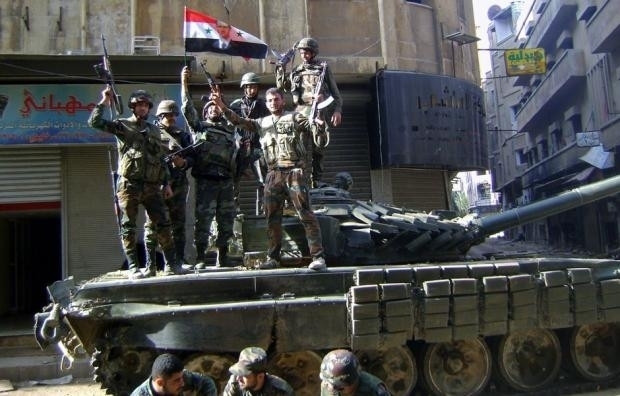In anticipation of the Geneva II conference, which has been delayed until late-January 2014, the Saudi-backed Syrian opposition launched a series of campaigns against regime forces, but failed to make any gains on several fronts.
Over the past two months, Syrian opposition fighters backed by Saudi Arabia have been waging a number of military campaigns to the south and west of Damascus – including the strategic Qalamoun area that runs along the Lebanese border – as well as in Deraa and Aleppo, in an attempt to change the balance of power on the ground, ahead of the Geneva II conference.
Very little was achieved in the Deraa area near the Jordanian border in the country’s south, as regime forces seized the initiative and struck first, dealing a blow to opposition plans to launch an attack. At best, the armed groups could be said to have been making very slow progress on many of the Hauran Plain’s fronts.
In Aleppo, the opposition did make some gains by surrounding the city and taking some regime-controlled areas, before the Syrian army waged a successful counter-attack from the southwest, breaking the opposition’s siege and reclaiming vast stretches of territory and a number of strategic towns, like al-Sfaira.
As for Damascus, the opposition sought to apply pressure on the capital from three areas: from the south by way of Western Ghouta and the southern suburbs; from the east by way of the Eastern Ghouta, where regime forces recently regained control; and finally from the north by way of the Qalamoun mountains.
The battles to the south of the capital went nowhere fast, as the Syrian army – backed by national defense forces and Hezbollah – launched a series of quick attacks on a series of opposition-controlled towns, which were surrounded and cleansed of fighters within a matter of hours and days. All that remained now were the Eastern Ghouta and the Qalamoun area.
On November 22, the opposition launched a concerted attack on a broad front in this area, striking a painful blow against the Syrian army which was deployed in the area. The armed groups’ target was the strategic town of al-Otaiba in the far eastern corner of Ghouta, which they succeeded in entering, but were unable to break the regime-imposed siege.
The army’s response, however, was extremely costly to the opposition, with around 1,000 fighters succumbing to death or severe injuries, which will prevent them from returning to the battlefield. Military sources maintain that fighters involved in the Eastern Ghouta campaign were among the best armed and trained they had come across in the conflict to date, and they operated according to a plan on an unprecedented scale.
The last front that threatened Damascus was the Qalamoun area, which both regime and Hezbollah sources say they had no interest in opening up until next spring. In an effort to compensate for their losses elsewhere, opposition groups here – most of them close to al-Qaeda – had taken the town of Mhain in early November, the site of a large military storage facility containing a massive of amount of ammunition, including 10,000 Katyusha rockets.
As the armed groups began to move ammunition from Mhain in the direction of the Qalamoun and the Lebanese border, the Syrian army launched a preventative counterattack that eventually allowed them to retake most of the mountainous border area’s main towns and villages, including Qara, Dayr Attiya, and al-Nabak, leaving only an isolated Yabrud as the opposition’s last holdout.
All of this does not mean that regime forces will be able to maintain control over the areas they wrested from the opposition, which in turn will continue to launch attacks in the area around the capital. But Syrian army and Hezbollah sources insist that Damascus is no longer in the danger zone, and the Saudi plan to shift the balance of forces on the ground in the opposition’s favor has ended in failure.
This article is an edited translation from the Arabic Edition.
......


